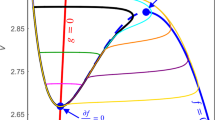Abstract.
The present paper examines the influence of the forcing frequency on the response of a randomly perturbed Hodgkin-Huxley system in the realm of suprathreshold amplitudes. Our results show that, in the presence of noise, the choice of driving frequency can seriously affect the precision of the external information transmission. At the same level of noise the precision can either decrease or increase depending on the driving frequency. We demonstrate that the destructive influence of noise on the interspike interval can be effectively reduced. That is, with driving signals in certain frequency ranges, the system can show stable periodic spiking even for relatively large noise intensities. Here, the most accurate transmission of an external signal occurs. Outside these frequency ranges, noise of the same intensity destroys the regularity of the spike trains by suppressing the generation of some spikes. On the other hand, we show that noise can have a reconstructive role for certain driving frequencies. Here, increasing noise intensity enhances the coherence of the neuronal response.
Similar content being viewed by others
References
E.R. Kandel, J.H. Schwartz, T.M. Jessell, Principles of Neural Science (Appleton and Lange, Norwalk, 1991)
M. Abeles, H. Bergman, E. Margalti, E. Vaadia, J. Neurophysiol. 70, 1629 (1993)
A. Riehle, S. Grün, M. Diesmann, A. Aertsen, Science 278, 1950 (1997)
E.V. Pankratova, A.V. Polovinkin, E. Mosekilde, Eur. Phys. J. B 45, 391 (2005)
H.A. Braun, M.T. Huber, M. Dewald, K. Schäfer, K. Voigt, Int. J. Bifurcation Chaos 8, 881 (1998)
E. Mosekilde, O.V. Sosnovtseva, D. Postnov, H.A. Braun, M.T. Huber, Nonl. Studies 11, 449 (2004)
A. Longtin, Nuovo Cimento D 17, 835 (1995)
A. Longtin, D.R. Chialvo, Phys. Rev. Lett. 81, 4012 (1997)
G.D. Smith, C.L. Cox, S.M. Sherman, J. Rinzel, J. Neurophysiol. 83, 588 (2000)
S. Coombes, M.R. Owen, G.D. Smith, Phys. Rev. E 64, 041914 (2001)
K. Wiesenfeld, F. Moss, Nature 373, 33 (1995)
L. Gammaitoni, P. Hänggi, P. Jung, F. Marchesoni, Rev. Mod. Phys. 70, 254 (1998)
P.E. Greenwood, L.M. Ward, D.F. Russell, A. Neiman, F. Moss, Phys. Rev. Lett. 84, 4773 (2000)
M. DeWeese, W. Bialek, Nuovo Cimento 17D, 733 (1995)
A.R. Bulsara, A. Zador, Phys. Rev. E 54, R2185 (1996)
X. Pei, L. Wilkens, F. Moss, Phys. Rev. Lett. 77, 4679 (1996)
M.T. Huber, H.A. Braun, Proceedings of SPIE 5110, 332 (2003)
N.G. Stocks, in Stochastic Processes in Physics, Chemistry and Biology, edited by J.A. Freund, T. Poschel, Lecture Notes in Physics, LNP 557 (Springer-Verlag, Berlin, 2000), pp. 150–159
M.T. Huber, H.A. Braun, J.C. Krieg, Biol. Psychiatry 47, 634 (2000)
J.-M. Fellous, A.R. Houweling, R.H. Modi, R.P.N. Rao, P.H.E. Tiesinga, T.J. Sejnowski, J. Neurophysiol. 85, 1782 (2001)
J.D. Hunter, J.G. Milton, P.J. Thomas, J.D. Cowan, J. Neurophysiol. 80, 1427 (1998)
J.D. Hunter, J.G. Milton, J. Neurophysiol. 90, 387 (2003)
Y. Yu, F. Liu, J. Wang, W. Wang, Phys. Lett. A 282, 23 (2001)
B. Gutkin, G.B. Ermentrout, M. Rudolph, J. Comp. Neuroscience 15, 91 (2003)
J.E. Levin, J.P. Miller, Nature 380, 165 (1996)
W. Wang, Y. Wang, Z.D. Wang, Phys. Rev. E 57, R2527 (1998)
P. Parmananda, C.H. Mena, G. Baier, Phys. Rev. E 66, 047202 (2002)
G. Matsumoto, K. Aihara, Y. Hanyu, N. Takahashi, S. Yoshizawa, J. Nagumo, Phys. Lett. A 123, 162 (1987)
A.L. Hodgkin, A.F. Huxley, J. Physiology 117, 500 (1952)
J. Keener, J. Sneyd, Mathematical Physiology (Springer Verlag, Berlin, 1998)
Z.F. Mainen, T.J. Sejnowski, Science 268, 1503 (1995)
M. Juusola, A.S. French, Neuron 18, 959 (1997)
F. Liu, W. Wang, X. Yao, Biol. Cybern. 77, 217 (1997)
A.S. Pikovsky, J. Kurths, Phys. Rev. Lett. 78, 775 (1997)
B. Lindner, J. Garcia-Ojalvo, A. Neiman, L. Schimansky-Geier, Phys. Rep. 392, 321 (2004)
S.-G. Lee, S. Kim, Phys. Rev. E 60, 826 (1999)
A.V. Rylyakov, K.K. Likharev, IEEE Trans. Appl. Supercond. 9, 3539 (1999)
C.W. Gardiner, Handbook of Stochastic Methods, 2nd edn. (Springer, Berlin, 1985)
Author information
Authors and Affiliations
Corresponding author
Rights and permissions
About this article
Cite this article
Pankratova, E., Belykh, V. & Mosekilde, E. Role of the driving frequency in a randomly perturbed Hodgkin-Huxley neuron with suprathreshold forcing. Eur. Phys. J. B 53, 529–536 (2006). https://doi.org/10.1140/epjb/e2006-00401-9
Received:
Published:
Issue Date:
DOI: https://doi.org/10.1140/epjb/e2006-00401-9




